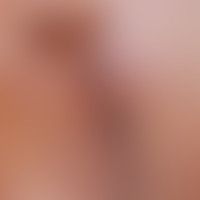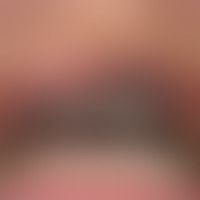Image diagnoses for "black"
81 results with 226 images
Results forblack
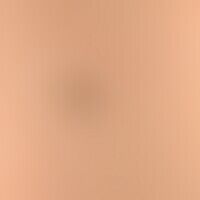
Nevus spitz D22.-
Naevus Spitz: slightly raised, irregularly bordered, black-brown neoplasm, existing for several months, in a 4-year-old child.
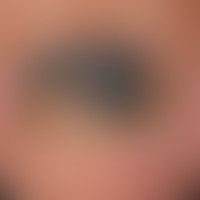
Nail diseases (overview) L60.8
nail hematoma: deep black discoloration of the nail plate. discoloration of the cuticle. the distal edge of the nail is not discolored.
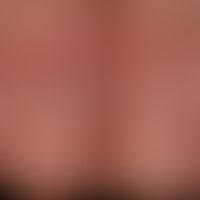
Nail diseases (overview) L60.8
Hyperkeratotic nail fold with splinter bleeding in progressive systemic scleroderma
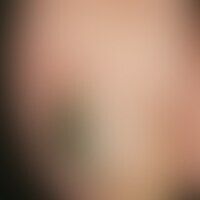
Nail diseases (overview) L60.8
Nail green-blackish: discoloration of the nail matrix due to mould infestation.
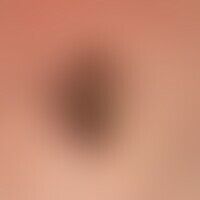
Basal cell carcinoma nodular C44.L
basal cell carcinoma nodular: centrally ulcerated basal cell carcinoma. the diagnosis is recognizable by the marginal, glassy nodular structures. the centre of the nodule is overlaid by an adherent haemorrhagic crust and thus cannot be assessed diagnostically.

Melanoma cutaneous C43.-
Malignant melanoma: In the centre of the lesion (encircled) parts of the primary nodular malignant melanoma. Slow peripheral spread with wart-like aspect. Small amelanotic papules marked by arrows, which are not directly anatomically related to the primary tumour (satellite metastases).
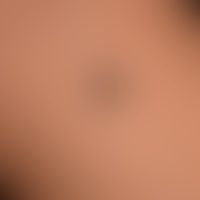
Nevus spitz D22.-
Naevus Spitz: a constantly growing, slightly raised, irregularly bordered, black-brown neoplasm, appearing already in the first months of life, in a now 3-year-old child.
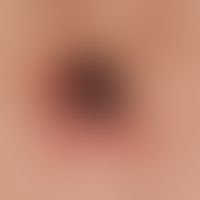
Melanoma nodular C43.L
Melanoma, malignant, nodular: Rapid growth in thickness in the last few months "I have already wet and bled once" (see further explanation in the following figure)

Acne (overview) L70.0
Acne vulgaris (overview): Detailed view: several (non-inflammatory) comedone-like depressions of the skin with horn retentions.
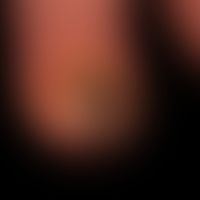
Raynaud's syndrome I73.0
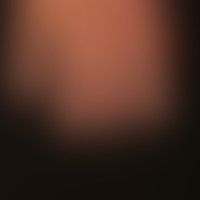
Thrombangiitis obliterans I73.1
Thrombangiitis obliterans: decades of nicotine abuse. 12 months of acrozynosis (even more severe in cooler environments) and mummified fingertip necrosis.

Acne comedonica L70.01
Acne comedonica: massive formation of comedones in papulopustular acne vulgaris.

Spindle cell tumor, pigmented D22.L
Pigmented spindle cell tumor, nevus reed: dark brown to black pigmented plaque, preferably located on the lower leg. The lesion is usually excised under the suspected diagnosis of melanoma. Illustration from the collection of Dr. Michael Hambardzumyan.
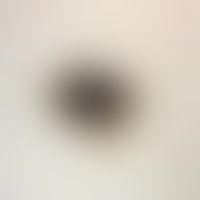
Spindle cell tumor, pigmented D22.L
Pigmented spindle cell tumor (nevus reed) - dermatoscopic picture: asymmetric, central structureless. in the periphery pseudopodia, lines and reticular lines are possible. differential diagnosis: melanoma. picture from the collection of Dr. Michael Hambardzumyan.
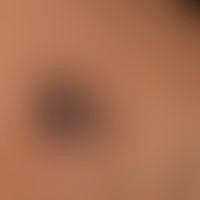
Melanoma cutaneous C43.-
Melanoma"type nodular transformed superficial spreading melanoma" : advanced malignant melanoma. black plaque known for several years with increasing, recently rapid thickness growth. repeated wetting and bleeding of the surface. 53 year old patient.
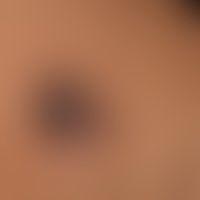
Node
Nodules black: Daignsoe: Melanoma "type nodular transformed superficial spreading melanoma": Black plaqueknown for several years with increasing, recently rapid thickness growth. repeated wetting and bleeding of the surface. 53-year-old patient.
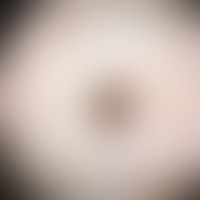
Lentigo, reticular L81.4
Ink spot lentigo: characteristic criteria are sharp demarcation, dark brown-black reticular lines (pigment network), which are interrupted in places within the lesion (dermatoscopic image)

Argyria L81.8
argyria (detail): localized argyria of the lip region and the oral mucosa. at higher magnification, the irregular, dark metal deposits in the area of the red of the lips are clearly visible (circle). on "normal" lip skin, this color tone is not produced by the horny layer of the skin.

Ulcer of the skin (overview) L98.4
Ulcer of the skin: complete necrosis of the end phalanx in previously known psoriatic systemic scleroderma.

Ekthyma L08
Ecthyma: on both lower legs, disseminated, 0.4-1.0 cm large, painful, sharply defined ulcers covered with black crusts
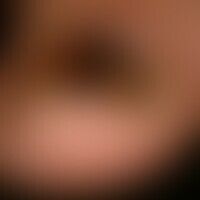
Melanonychia striata L60.8
Melanonychia striata longitudinalis: completelysymptomless brown-black longitudinal pigmentation of the nail plate. on frontal view the thickness of the pigment strip becomes visible. the white-crumbly structure of the nail indicates an additional nail mycosis.

